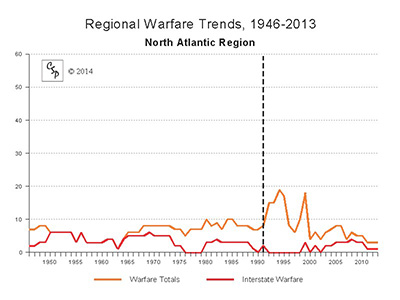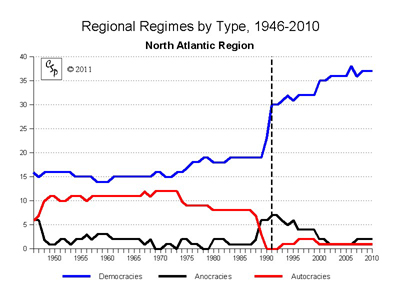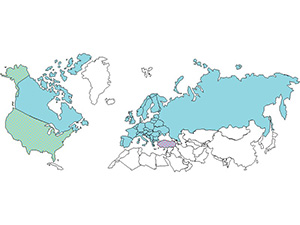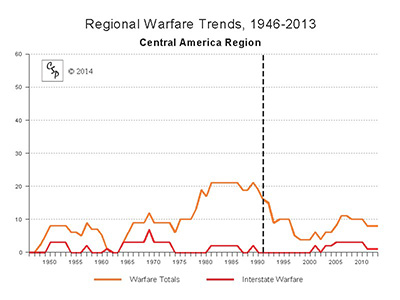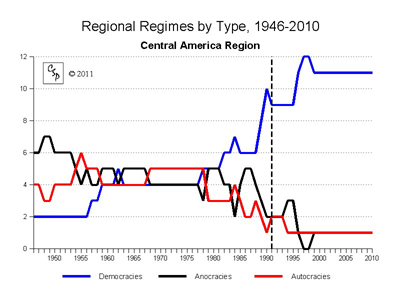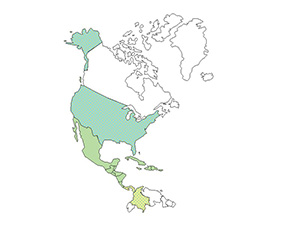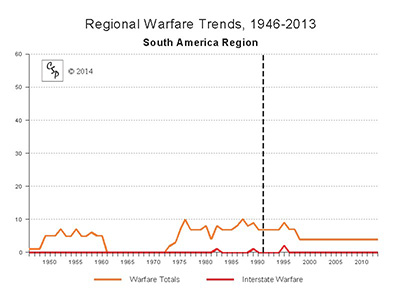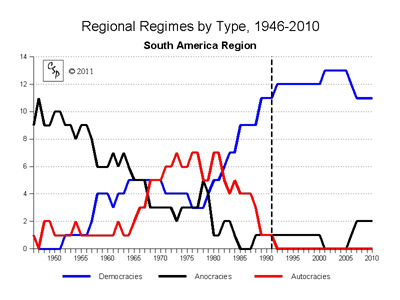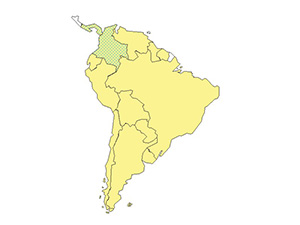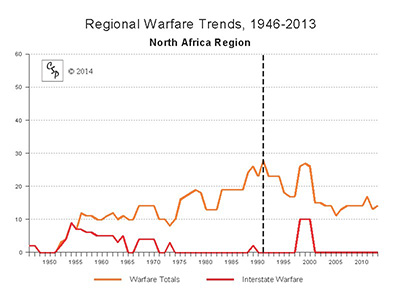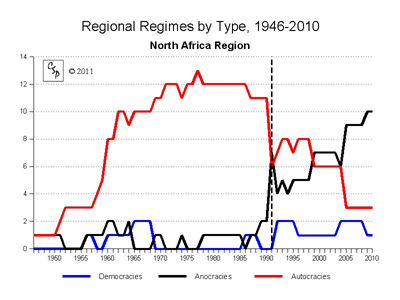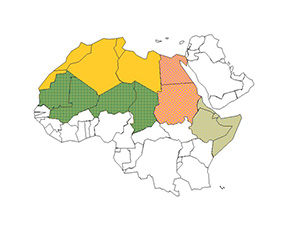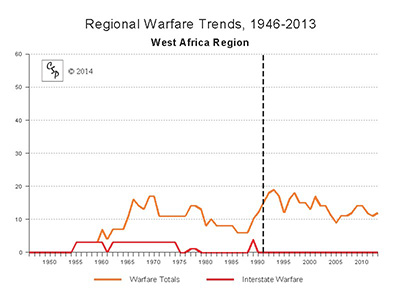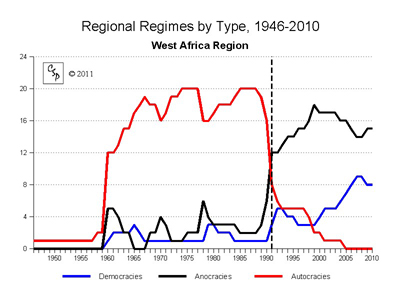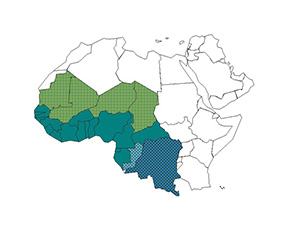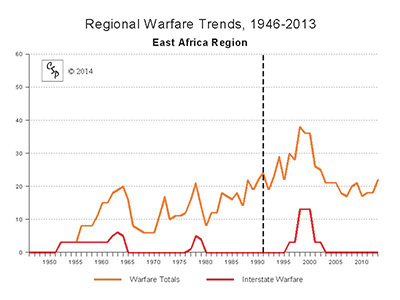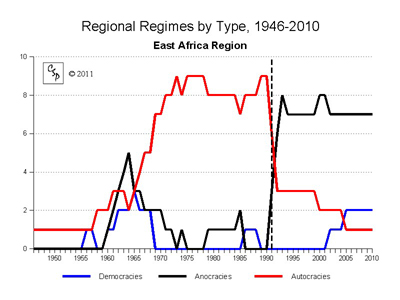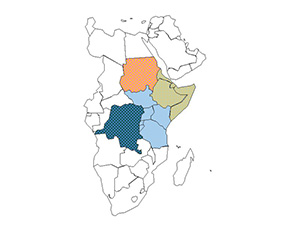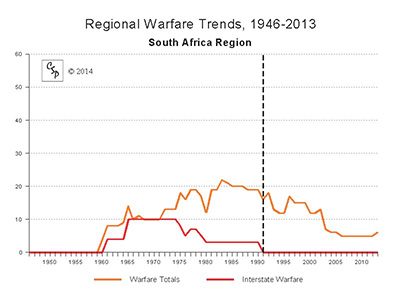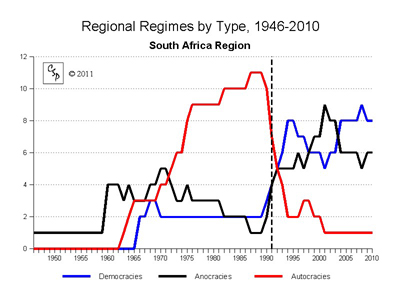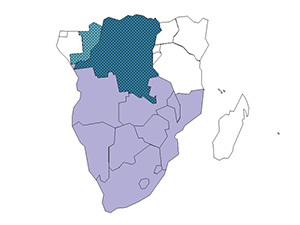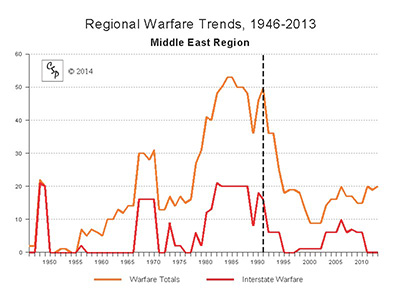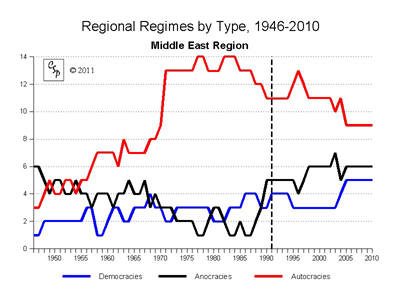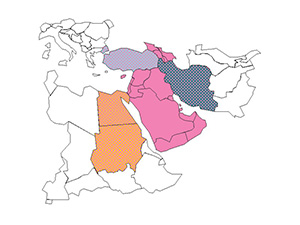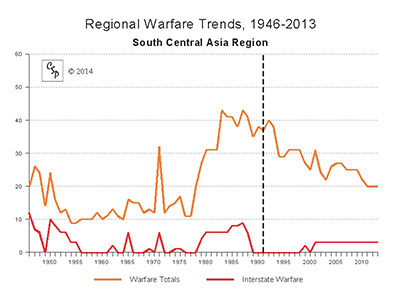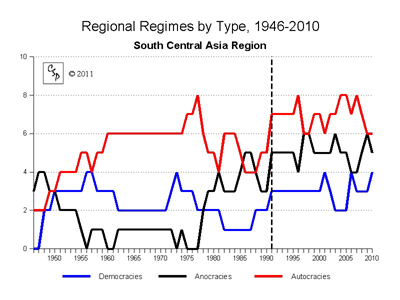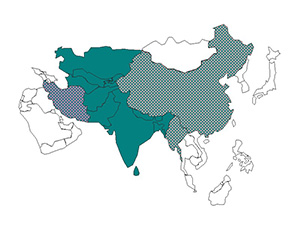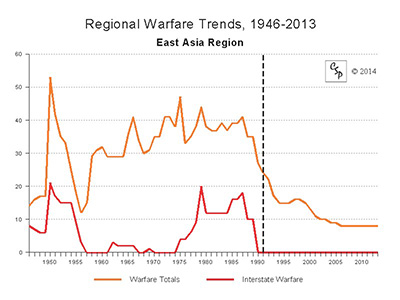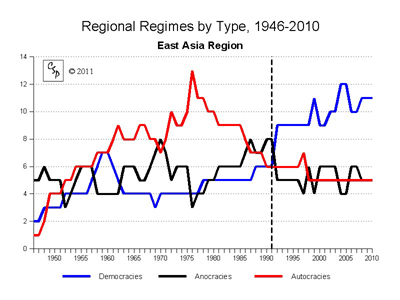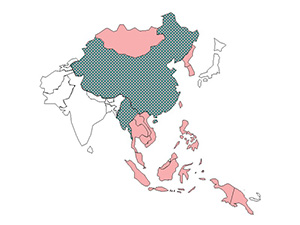 Regional Conflict Trends within the Global System
Regional Conflict Trends within the Global System
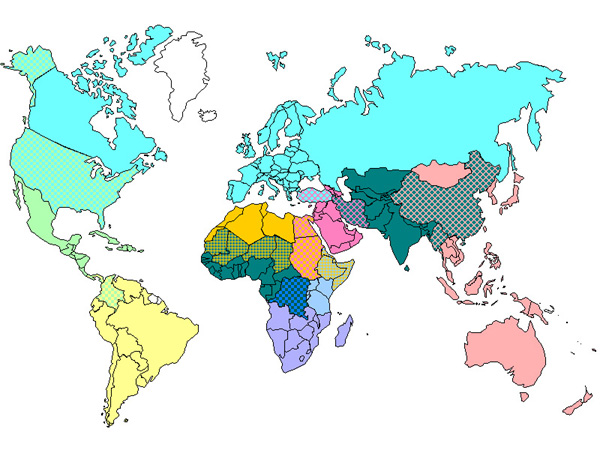 |
|||||||||||
|
Regional warfare and governance trends (arrayed below) are updated through 2013
|
|||||||||||
Armed Conflict Drivers in the Early 21st CenturyAlthough the general global trend in armed conflict decreased substantially following the end of the Cold War in 1991, this downward trend has leveled off since the turn of the 21st Century and may even be reversed. Here we list some of the most prominent, observed "conflict drivers" associated with recent onsets of armed conflicts that are contributing to this global counter-trend:
The Armed Conflict and Intervention (ACI) and Polity projects are core projects at the Center for Systemic Peace; both of these projects are directed by Monty G. Marshall. The Polity project codes annual data on Political Regime Characteristics and Transitions over the period 1800-2013 for all countries in the world with populations over 500,000 in the most recent year recorded (2013); for more information, click here. The ACI project codes levels of violence in all types of Major Episodes of Political Violence (MEPV) in the world during the period 1946-2013. Major episodes of political violence (armed conflicts) involve at least 500 fatalities and may be of any type: inter-state or intra-state; these include all episodes of international, civil, ethnic, communal, and geno-politicidal violence and warfare. Episodes are coded on a scale of one to ten according to an assessment of the full impact of their violence on the societies that directly experience their effects; the effects of political violence and warfare include fatalities and casualties, resource depletion, destruction of infrastructure, and population dislocations, among other things such as the psychological trauma to individuals and adverse changes to the social psychology and political culture of affected social identity groups. The highest magnitude episode recorded during the contemporary period, 1946-present, is scored at magnitude 7; a magnitude 10 episode would involve total (nuclear, chemical, or biological) annihilation. Category 7 episodes include the Second Vietnamese War, the First Afghanistan War, and the Rwandan Genocide; category 6 episodes include the First Vietnamese War, India Partition, Chinese Civil War, Korean War, Biafran Secession in Nigeria, Bengali Secession in Pakistan, Khmer Rouge Politicide in Cambodia, Angolan Civil War, Salvadoran Civil War, Iran-Iraq War, Mozambiquan Civil War, Second Sudanese Civil War, Bosian Civil War, and the Iraq Implosion following the ouster of Saddam Hussein. The MEPV categories represent standardized event magnitudes based on levels of societal affect (i.e., a measure of the general magnitude that a society's normal networking and functioning is affected by violent disruption); the categories are considered comparable units of measurement. Global and regional trends in warfare are visualized graphically by aggregating the coded scores for all ongoing episodes of major armed conflict in a given year in all independent states. For a more detailed explanation of the MEPV coding methodology, click here. CSP presents the global and regional warfare trends graphs with great confidence in their accuracy, reliability, and comprehensiveness and contends that the foundation for the trends (i.e., the global system) provides a constant "universe of analysis" through the contemporary period (the Era of Globalization). To review the complete listing, "Major Episodes of Political Violence, 1946-2013," used to construct the warfare trends, click here. The ACI project also produces the annual lists of Internal Wars and Failures of Governance used by the US Government-sponsored Political Instability Task Force (PITF; formerly known as the State Failure Task Force, established in 1994). For more information on the data resources and ongoing research of the Task Force, click here. |
|||||||||||

